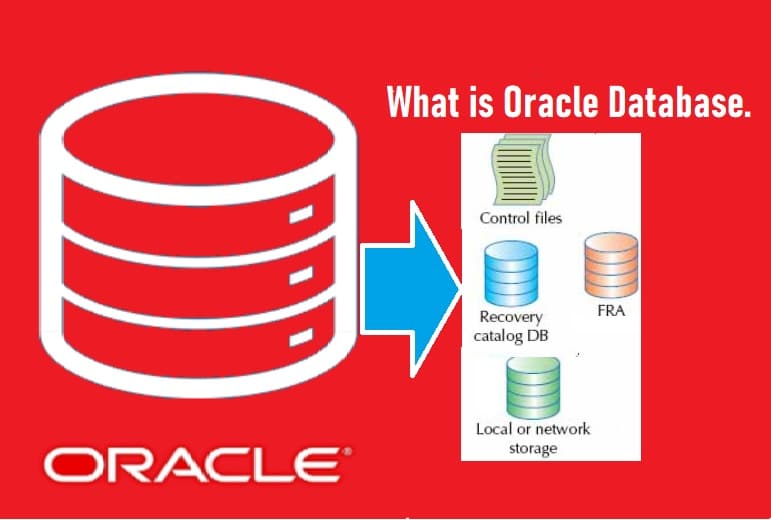In this post we will discuss what is oracle database. Here we will learn it in detail related to oracle database. We already know that database is very important to store any data into database. We must have aware about database and its characteristics.
Let’s start about what is oracle database.

Introduction to oracle database
We know that an oracle database is a collection of data in one or more files. The database contains physical and logical structures. During development of applications, we can create structures such as tables and indexes to store row and speed their retrieval.
To protect database objects from unauthorized access, create synonyms for the object name, view objects in different databases, and restrict access to the database objects. Even accessing files outside of the database is possible using external tables.
The system global area (SGA) in memory and the backup ground processes that communicate with the SGA and the database files on disk make up an Oracle instance. Multiple instances of an Oracle Real Application Cluster (RAC) will use the same database. The instances are often connected via a high-speed internet connection and run on distinct server processes.
Inside Oracle database, we will aware that what is oracle.
The foundation of an Oracle database is a table. The following types of tables are supported by the Oracle database.
- Relational tables: – You can create a table to record the rows added and changed by your application using the Oracle provided datatypes. Tables have definitions for their columns, and you can add or remove columns as your application’s needs change. Using the create table command, we may create tables.
SQL> Create table <table_name> (column_1 data_type column_constraint,column_2 data_type column_constraint,table_constraint); - Object-relational tables: – Use Oracle’s object relational capabilities to benefit from features like type inheritance. You can create your own datatypes and use them to define columns, object tables, nested tables, and other things.
- Index-Organized tables: – We can create table that store its data within an index structure, allowing the data to be sorted within the table.
- ACID Compliance: Oracle Database upholds the ACID (Atomicity, Consistency, Isolation, Durability) concepts, guaranteeing data reliability and integrity even in the face of errors.
- Concurrency Control: Oracle Database uses sophisticated algorithms to control how many users can access and edit the data at once, avoiding conflicts and preserving data consistency.
- Scalability: By using clustering techniques or extra hardware resources, Oracle Database can manage massive volumes of data and be scaled up or out to meet expanding data needs.
- Security: To secure sensitive information, Oracle Database provides a number of security capabilities, such as user authentication, authorization, data encryption, and auditing.
- Backup and Recovery: To ensure that data can be restored in the event of failures, crashes, or data corruption, the database provides sophisticated backup and recovery capabilities.
- Performance Optimization: To enable effective data access, Oracle Database contains tools and capabilities for query performance optimization, indexing, caching, and resource management.
- Data Manipulation Language (DML): Interacting with the Oracle Database requires the usage of SQL (Structured Query Language). Users can insert, update, delete, and query data using SQL commands, among other activities.
- Data Warehousing: Large volumes of historical data can be stored and analyzed by businesses for use in decision-making through Oracle Database’s support for data warehousing and analytics.
- High Availability: To achieve high availability and less downtime, Oracle Database provides capabilities including data replication, clustering, and failover methods.
- Partitioning: It is possible to partition large tables into smaller ones, which enhances query performance and manageability.
- In-Memory Processing: The in-memory option in Oracle Database speeds up database performance by caching frequently used data.